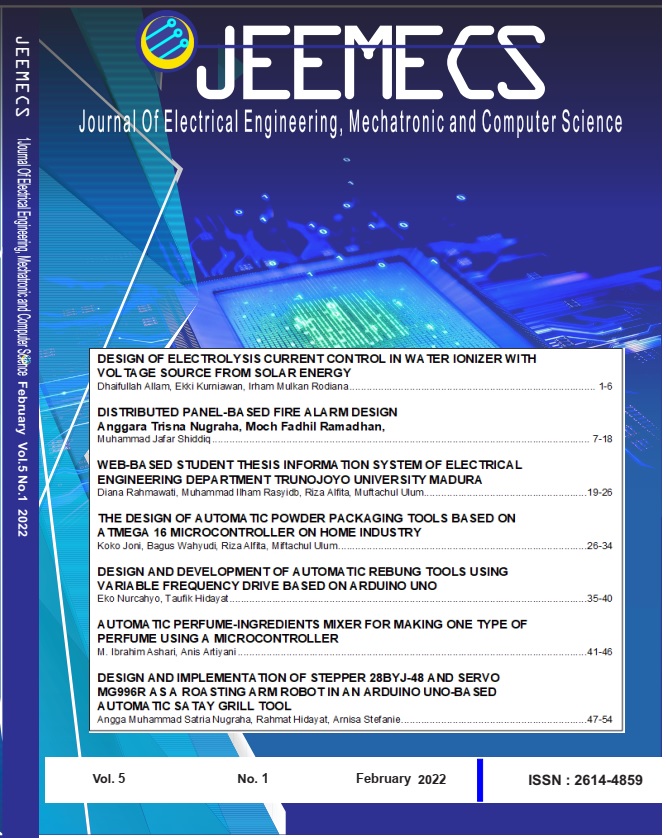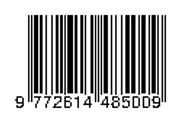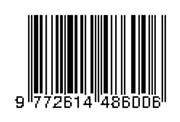Distributed Panel-based Fire Alarm Design
DOI:
https://doi.org/10.26905/jeemecs.v5i1.6030Keywords:
Arduino Nano, Temperature Sensor, Light Sensor, LVMDPAbstract
The shopping center switchboard system consists of several parts: a 20 kV cabinet to a 20 kV to 380 V step-down transformer, which is then provided to the user to control the newly upgraded LVMDP (low voltage main switchboard). Before distributing to users, they need to pay attention to the fixed power factor of the capacitor bank. Lack of an exemplary power factor will cause an inductive load on the capacitor bank, high temperatures due to high loads will damage the capacitor bank. A switchboard safety automation technology with a microcontroller control system has been proposed to complete this research. Microcontroller control system for switch safety includes Microprocessor (Arduino Nano), light sensor (LDR), temperature sensor (LM35DZ), LCD 16x2 I2C, actuator (fan, buzzer, three-phase network disconnect switch relay), switch (5 VDC relay), ADC As data input. The working principle of the microcontroller is: if the LM35DZ sensor detects the specified temperature, an alarm will be triggered, while the LDR sensor detects a spark, the alarm will be triggered as a danger warning signal and cut off the power grid. Equipment designed to prevent switchboard safety caused by high temperatures or sparks can prevent fires.Downloads
References
Anton Junaidi, 2003 Studi Efisiensi VSD Pada Blower Cooling Tower Di PT.Siam Mapion Polyers
bayupancoro in bayu pancoro, electric, Electric fo Dummies, listrik.Posted by Tags: AC Drive, Inverter, Speed Controller, Variable Frequency Drive, Variable Speed Drive, VFD, VSD
Iwan Setiawan, (ISBN : ISBN 979-763-099-4, Penerbit Andi Yogyakarta, 2006)
Introduction Master Drive Variable Speed Drive, Siemens
Moch syaik, 2002 Analisa system pengaturan kecepatan dengan VVVF inverter dan pengereman pada motor penggerak utama KRL produksi PT.Inka madiun
Nugraha, Anggara Trisna, and Dadang Priyambodo. "Analysis of Determining Target Accuracy of Rocket Launchers on Xbee-Pro based Wheeled Robots to Realize the Development of Technology on the Military Field." Journal of Electronics, Electromedical Engineering, and Medical Informatics 2.3 (2020): 114-118.
Penulis, Mahasiswa S-2 Teknik Elektro - UI, Depok, Dosen Pembimbing, Staff Pengajar pada Jurusan Teknik Elektro - UI, Depok 16424, Indonesia
Reza Fakhrizal1, Tedjo Sukmadi2, Mochammad Facta2, Jurusan Teknik Elektro Fakultas Teknik Universitas Diponegoro Semarang.
Nugraha, Anggara Trisna, and Dadang Priyambodo. "Design of Pond Water Turbidity Monitoring System in Arduino-based Catfish Cultivation to Support Sustainable Development Goals 2030 No. 9 Industry, Innovation, and Infrastructure." Journal of Electronics, Electromedical Engineering, and Medical Informatics 2.3 (2020): 119-124.
Mengoperasikan-motor-3-fasa-dengan-sistem-pengendali elektromagnetik / Universitas Sumatra.
Nugraha, Anggara Trisna, and Dadang Priyambodo. "Design of a Monitoring System for Hydroganics based on Arduino Uno R3 to Realize Sustainable Development Goals number 2 Zero Hunger." Journal of Electronics, Electromedical Engineering, and Medical Informatics 3.1 (2021): 50-56.
Manual inverter dan PLC omron
Tim Fakultas Teknik Universitas Negeri Yogyakarta
Kirschen, Daniel S., Donald W. Novotny, and Thomas A. Lipo. "On-line efficiency optimization of a variable frequency induction motor drive." IEEE transactions on industry applications 3 (1985): 610-616.
Kastha, Debaprasad, and Bimal K. Bose. "Fault mode single-phase operation of a variable frequency induction motor drive and improvement of pulsating torque characteristics." IEEE Transactions on Industrial Electronics 41.4 (1994): 426-433.
Umanand, Prof. L., 2007, Non-Conventional Energy Systems. Bangalore : Indian Institute of Science Bangalore.
Nugraha, Anggara Trisna, and Lailia Nur Safitri. "Optimization of Central Air Conditioning Plant by Scheduling the Chiller Ignition for Chiller Electrical Energy Management." Indonesian Journal of electronics, electromedical engineering, and medical informatics 3.2 (2021): 76-83.
Pikatan, Sugata., 1999, Konversi Energi Angin. Surabaya : Departemen Mipa Universitas Surabaya
Anonim 3, 2012, Keuntungan Kerugian Angin, ( Sumber : www.surya.co.id), di unduh pada tanggal 21 April 2012 pukul 08.30 wita.
Manwell, J.F ., 2002. Wind Energy Explained Theory, Design and Application. Amherst : John Wiley and Sons, Ltd
Downloads
Published
Issue
Section
License
Our ethic statements are based on COPE’s Best Practice Guidelines for Journal Editors.
Publication decisions
The editor is responsible for deciding which of the articles submitted to the journal should be published.
The editor may be guided by the policies of the journal's editorial board and constrained by such legal requirements as shall then be in force regarding libel, copyright infringement and plagiarism. The editor may confer with other editors or reviewers in making this decision.
Fair play
An editor at any time evaluate manuscripts for their intellectual content without regard to race, gender, sexual orientation, religious belief, ethnic origin, citizenship, or political philosophy of the authors.
Confidentiality
The editor and any editorial staff must not disclose any information about a submitted manuscript to anyone other than the corresponding author, reviewers, potential reviewers, other editorial advisers, and the publisher, as appropriate.
Disclosure and conflicts of interest
Unpublished materials disclosed in a submitted manuscript must not be used in an editor's own research without the express written consent of the author.
Duties of Reviewers
Contribution to Editorial Decisions
Peer review assists the editor in making editorial decisions and through the editorial communications with the author may also assist the author in improving the paper.
Promptness
Any selected referee who feels unqualified to review the research reported in a manuscript or knows that its prompt review will be impossible should notify the editor and excuse himself from the review process.
Confidentiality
Any manuscripts received for review must be treated as confidential documents. They must not be shown to or discussed with others except as authorized by the editor.
Standards of Objectivity
Reviews should be conducted objectively. Personal criticism of the author is inappropriate. Referees should express their views clearly with supporting arguments.
Acknowledgement of Sources
Reviewers should identify relevant published work that has not been cited by the authors. Any statement that an observation, derivation, or argument had been previously reported should be accompanied by the relevant citation. A reviewer should also call to the editor's attention any substantial similarity or overlap between the manuscript under consideration and any other published paper of which they have personal knowledge.
Disclosure and Conflict of Interest
Privileged information or ideas obtained through peer review must be kept confidential and not used for personal advantage. Reviewers should not consider manuscripts in which they have conflicts of interest resulting from competitive, collaborative, or other relationships or connections with any of the authors, companies, or institutions connected to the papers.
Duties of Authors
Reporting standards
Authors of reports of original research should present an accurate account of the work performed as well as an objective discussion of its significance. Underlying data should be represented accurately in the paper. A paper should contain sufficient detail and references to permit others to replicate the work. Fraudulent or knowingly inaccurate statements constitute unethical behavior and are unacceptable.
Originality and Plagiarism
The authors should ensure that they have written entirely original works, and if the authors have used the work and/or words of others that this has been appropriately cited or quoted.
Multiple, Redundant or Concurrent Publication
An author should not in general publish manuscripts describing essentially the same research in more than one journal or primary publication. Submitting the same manuscript to more than one journal concurrently constitutes unethical publishing behaviour and is unacceptable.
Acknowledgement of Sources
Proper acknowledgment of the work of others must always be given. Authors should cite publications that have been influential in determining the nature of the reported work.
Authorship of the Paper
Authorship should be limited to those who have made a significant contribution to the conception, design, execution, or interpretation of the reported study. All those who have made significant contributions should be listed as co-authors. Where there are others who have participated in certain substantive aspects of the research project, they should be acknowledged or listed as contributors.
The corresponding author should ensure that all appropriate co-authors and no inappropriate co-authors are included on the paper, and that all co-authors have seen and approved the final version of the paper and have agreed to its submission for publication.
Disclosure and Conflicts of Interest
All authors should disclose in their manuscript any financial or other substantive conflict of interest that might be construed to influence the results or interpretation of their manuscript. All sources of financial support for the project should be disclosed.
Fundamental errors in published works
When an author discovers a significant error or inaccuracy in his/her own published work, it is the author’s obligation to promptly notify the journal editor or publisher and cooperate with the editor to retract or correct the paper.











